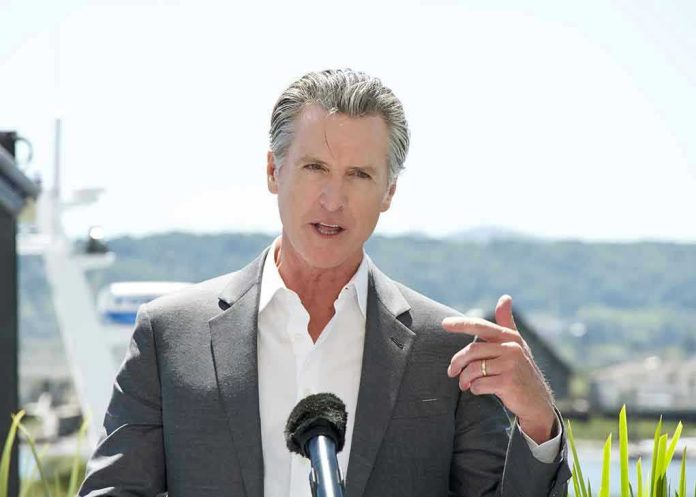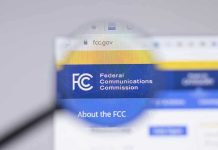
One man’s name now sits atop the wish list for Democratic Party power-brokers, Gavin Newsom, whose relentless national rise has forced even doubters to admit: the 2028 contest already has its alpha player, and the ripple effects are just beginning.
Story Snapshot
- Politico names Gavin Newsom the Democratic frontrunner for 2028, setting off a new phase in presidential jockeying.
- Newsom’s national profile, campaign machinery, and fundraising are already operating at presidential scale.
- The Democratic Party’s leadership vacuum post-Biden has made Newsom the nexus of both moderate and progressive hopes—and anxieties.
- Early dominance brings both strategic advantages and new political dangers as rivals eye his every move.
Gavin Newsom’s Meteoric National Ascent
California Governor Gavin Newsom has not so much entered the national stage as he has bulldozed his way onto it. Since 2023, Newsom’s profile expanded far beyond Sacramento, with high-visibility appearances, policy crusades, and a willingness to wade into national debates that most governors avoid. In 2025, his role in climate negotiations at the UN and aggressive redistricting advocacy made him a fixture on cable news and front pages. By November 2025, Politico formally declared him the Democratic frontrunner for 2028, citing his unmatched organizational muscle and the vacuum created by Biden’s anticipated exit from the scene. The Democratic establishment, craving clarity after years of succession drama, suddenly had a name to rally—or rebel—around.
Newsom’s rise is not by accident. Allies and critics alike point to a well-oiled political operation sharpened over decades, from his days as San Francisco mayor to his current perch. He’s amassed a deep bench of strategists, built an enviable fundraising apparatus, and cultivated relationships with both Hollywood elites and grassroots activists. The Campaign for Democracy PAC, launched well ahead of the 2026 midterms, signals his intent: he’s not waiting for the field to form around him. Newsom is shaping the field himself, investing early in battleground states and leveraging his California brand as a national calling card.
The Democratic Party’s Leadership Vacuum: Opportunity and Risk
With President Biden’s era winding down, the Democratic Party faces a generational crossroads. Newsom’s emergence as frontrunner is as much about his strengths as it is about the party’s hunger for new direction. Past “next-in-line” hopefuls—think Kamala Harris or Pete Buttigieg—have struggled to unite the party or even define themselves on the national stage. Newsom, by contrast, boasts a policy résumé that touches nearly every Democratic priority, from climate change to voting rights to pandemic management. His ability to bridge the party’s moderate-progressive divide, at least for now, has kept potential rivals at bay.
Yet history warns that early frontrunners are exposed to slings and arrows from all sides. Newsom’s centrist pivot, especially on economic and public safety issues, risks alienating the activist base—a fact not lost on rivals like Alexandria Ocasio-Cortez or Ro Khanna, who quietly lay the groundwork for insurgent bids. The coming release of Newsom’s memoir, “Young Man in a Hurry,” and his relentless media presence could either cement his status or provide ammunition to critics eager to paint him as too ambitious, too slick, or too California for heartland voters.
Building a Presidential Machine: Infrastructure and Influence
Newsom’s campaign infrastructure is already described by political insiders as “ready-for-president.” While he stops short of a formal announcement, all the trappings are there: a national donor network, digital and field operations in early primary states, and a trusted circle of veteran campaign hands. His involvement in the 2026 midterm push for House Democrats is strategic, deepening ties with local party leaders and activists who will be essential in a primary gauntlet. Major donors, sensing momentum, are lining up behind him, even as some hedge bets with alternative candidates.
Mainstream media coverage and polling reinforce the narrative, with Politico’s in-depth reporting cited by Fox News and The New York Times as a catalyst for the “frontrunner” label. Newsom’s team circulates internal polling that positions him as the party’s best hope to bridge urban-rural divides, though skeptics warn that such advantages can evaporate under the glare of national scrutiny.
The Road Ahead: Open Questions and Unfinished Battles
Newsom’s early dominance has real consequences. It may deter less-resourced rivals from launching bids, but it also paints a target on his back. As 2026 approaches, the Democratic Party’s ideological fractures will sharpen, with Newsom walking a tightrope between appealing to the broad center and energizing progressives. His stewardship of key policy issues—especially climate and redistricting—will be scrutinized for both substance and symbolism.
Experts caution that the road from “frontrunner” to nominee is littered with cautionary tales. Early leads can breed complacency or invite backlash. Newsom’s challenge is to build on his current momentum without peaking too soon or alienating essential constituencies. The coming year’s battles—midterms, memoir, and maneuvering—will test whether his current dominance is the start of a new Democratic era or just another chapter in the party’s unsettled search for leadership.







